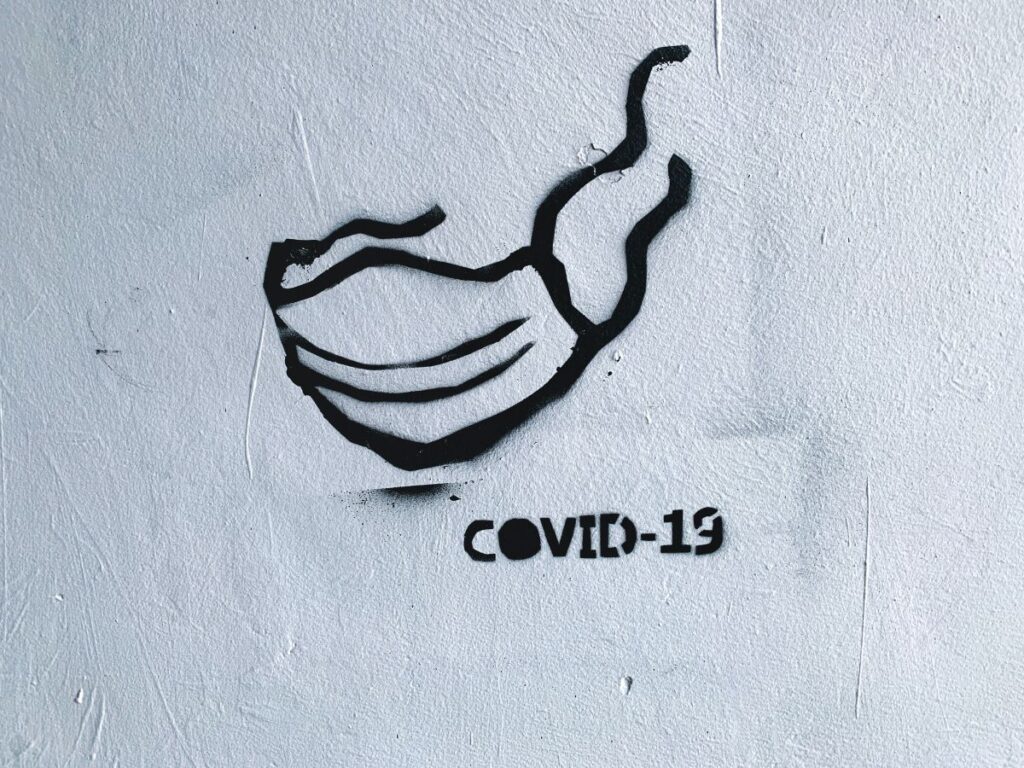
The current situation, characterised by the Covid-19 pandemic occurrence, presents with numerous challenges, particularly for people requiring mental health support. Further pressure has been created following an increase in the need for more accessible and affordable ways to deliver mental health care.
The use of online treatments is getting more and more common and seems to be justified by the current circumstances. However, the real question is whether the effects of these new treatments are actually comparable to those of face-to-face interventions, where the therapist and the patient sit in the same room and a therapeutic relationship is established.
This extremely timely study conducted by Axelsson et al. (2020) could help address this question. The authors aimed to target a specific condition that was common even before the outbreak – that is, heath anxiety (or hypochondriasis).
People with this condition (characterised by an intense fear of being/getting seriously unwell, which forces the individual to constantly seek medical reassurance), appear to respond well to cognitive behavioural therapy (CBT) (Barsky & Ahern, 2017). Given the high societal costs of this particular type of anxiety (Sunderland et al., 2013), the authors conducted a randomised non-inferiority clinical trial to see whether internet-delivered CBT (iCBT) could produce the same effects as face-to-face CBT, at a lower cost and with less therapist time.

Could iCBT for health anxiety produce the same effects as face-to-face CBT, but at a lower cost?
Methods
For the purpose of this Swedish study, the authors recruited participants through routine care referral and online self-referral to primary care. Participants were included if they were 18 or over and had a diagnosis of somatic symptom disorder or anxiety disorder according to the DSM-5 criteria.
Participants were excluded if they met criteria for bipolar disorder, psychosis, severe depression, recurrent suicidal ideation, personality disorders, alcohol or substance use disorder (in the previous six months), or serious somatic conditions, or if they were already undertaking other treatments for health anxiety or were treated with CBT in the past year.
The eligible participants were randomly and evenly allocated to either face-to-face CBT or iCBT delivered by email, and the same protocols, i.e. 12 weeks duration and use of cognitive behavioural techniques for health anxiety were followed in each condition. Measures to prevent bias (e.g. use of true random number service and blinding) were taken.
The main outcome, namely change in health anxiety during the treatment, was measured using the Health Anxiety Inventory (HAI), which was completed at baseline, during each week, and when the treatment was completed. Further follow-up assessments were then conducted.
Secondary outcomes such as general anxiety, depression and disability, were measured with validated questionnaires completed online.
Statistical analyses included non-inferiority and power analyses, as well as mixed-effects linear regression. All together, this study represents an efficient way to assess the efficacy of one treatment compared to another.
For the health economic analyses, the researchers compared iCBT to face-to-face CBT focusing on the societal costs in relation to clinical efficacy (cost effectiveness) and quality-adjusted life-years (cost utility). Costs included costs of therapies and medications (including the cost of iCBT or face-to-face CBT), costs of non-medical help and services, and indirect costs such as those of unemployment.
Results
Overall, 204 patients were included, with 102 randomised to CBT and the other 102 to iCBT. Sociodemographic and clinical characteristics such as age, sex and education did not differ significantly between the groups.
The analyses indicated that, despite iCBT therapists spending 78% less time per patient compared to CBT therapists, iCBT was non-inferior to CBT in its impact on people with health anxiety (intention-to-treat analysis 95% CI: 1.98; per-protocol analysis 95% CI: 2.17). In fact, the confidence intervals (CIs) upper bounds converged within the non-inferiority margin of 2.25 on the health anxiety inventory, which was pre-set by the authors to investigate non-inferiority after considering expert consensus.
A dose-response relationship was also present, i.e. the more modules were completed in iCBT (B = -0.44; 95% CI, -0.88 to -0.01) or the more sessions were attended in CBT (B =-0.92; 95% CI, -1.57 to -0.26), the more health anxiety was reduced.
No substantial difference was reported with regards to the effect of treatments on secondary outcomes.
CBT presented with a larger proportion of treatment completers (92 of 102 (90.2%)) compared to ICBT (81 of 102 (79.4%)), and with significantly higher therapeutic alliance (mean (SD), 32,3(7.9) vs 36.3 (5.9)), while no difference was found in treatment credibility.
In terms of health economic outcomes, it emerged that iCBT is likely to result in lower therapist costs (mean (SD): $454 (257) vs $2059 (595)).
Finally, an increase in anxiety was experienced by a few people in both groups, but no serious adverse events were reported.

The findings showed that iCBT efficacy is comparable to that of CBT in the short term, though iCBT requires less time per patient and is therefore more cost-effective.
Conclusions
According to this RCT findings (Axelsson et al, 2020), not only was iCBT found to be non-inferior to CBT for health anxiety in terms of effectiveness, but it was also significantly less expensive and less time-consuming.
Strengths and limitations
Overall, this study presents with numerous strengths: first among all, the use of a randomised design, which should help minimise the occurrence of biases. Other strengths listed by the authors include the use of a well-powered sample, very limited loss of data, an appropriate statistical model, reliance on competent therapists, proper treatment fidelity, and balanced treatment groups.
The most important limitations were also mentioned. For instance, the generalisability of the study might have been undermined by the majority of the sample being highly educated. Also, no post-treatment psychiatric interviews have been used, and not all patients’ parallel treatments have been taken into considerations throughout the study. Moreover, the authors explained that they could not assess non-inferiority at follow-up due to a lack of power, hence we cannot be sure about the long-term effects of iCBT in patients with health anxiety.
The authors also referred to two potential limitations of such an approach. First, iCBT might not be as accessible as expected for everyone, e.g. people with reading and writing difficulties. Second, the rather small difference in the effect of iCBT compared to CBT, though not statistically significant, could very well be clinically significant, also in terms of general treatment adherence. However, this study successfully showed that, in line with existing literature (Newby et al., 2018; Hedman et al., 2016), at least in the short-term, iCBT can help make a difference for people with health anxiety.

While this study can rely on important strengths, such as the use of randomisation and a large sample, it’s also noted that the sample was highly educated which may limit generalisation.
Implications for practice
It is indeed encouraging for mental health services to know that online interventions are showed to be as effective as those conducted in person, therefore studies like this one are necessary in deciding whether to implement new tailored interventions. Though they acknowledged the need for more data, the authors managed to add to the existing literature a further confirmation that such approaches can be of clinical aid for patients with mental health problems; in this case, specifically for health anxiety.
Given that people with this condition are likely struggling even more during the pandemic, this study represents a timely potential solution that can be implemented quite quickly.
However, a potential limitation should be mentioned – that is, the use of an email approach, which could be perceived as impersonal and affect treatment adherence as a consequence. It would be interesting for future studies to focus on approaches that include virtual sessions conducted by video for both practitioners and their patients, and see whether treatment adherence improves.
In conclusion, I think that while this study provides evidence for the efficacy of a more indirect approach, more personal interventions using technologies such as video-calls could perhaps account for this lack of human contact, which is particularly needed in these unusual times.

Important implications for practice include an increased use of online interventions in the field of health anxiety, which may be of particular utility in the current pandemic.
Statement of interests
None.
Links
Primary paper
Axelsson E, Andersson E, Ljótsson B, Björkander D, Hedman-Lagerlöf M, Hedman-Lagerlöf E. (2020) Effect of Internet vs Face-to-Face Cognitive Behaviour Therapy for Health Anxiety: A Randomized Noninferiority Clinical Trial. JAMA Psychiatry. Published online May 13, 2020. doi:10.1001/jamapsychiatry.2020.0940
Other references
Barsky, A. J., & Ahern, D. K. (2004). Cognitive behavior therapy for hypochondriasis: a randomized controlled trial (PDF). Jama, 291(12), 1464-1470.
Hedman, E., Axelsson, E., Andersson, E., Lekander, M., & Ljotsson, B. (2016). Exposure-based cognitive-behavioural therapy via the internet and as bibliotherapy for somatic symptom disorder and illness anxiety disorder: randomised controlled trial (PDF). The British journal of psychiatry, 209(5), 407-413.
Newby, J. M., Smith, J., Uppal, S., Mason, E., Mahoney, A. E., & Andrews, G. (2018). Internet-based cognitive behavioral therapy versus psychoeducation control for illness anxiety disorder and somatic symptom disorder: A randomized controlled trial. Journal of consulting and clinical psychology, 86(1), 89.
Sunderland, M., Newby, J. M., & Andrews, G. (2013). Health anxiety in Australia: prevalence, comorbidity, disability and service use (PDF). The British Journal of Psychiatry, 202(1), 56-61.
Photo credits
- Photo by Brooke Cagle on Unsplash
- Photo by Fabian Blank on Unsplash
- Photo by Icons8 Team on Unsplash
- Photo by freestocks on Unsplash
- Photo by Pang Yuhao on Unsplash
- Photo by Adam Nieścioruk on Unsplash

The recent covid19 restrictions are forcing us to adapt our methods of communication, becoming more reliant on IT. This blog describes CBT by email and an earlier blog describes use of apps. I am concerned that the low costs might appeal to service providers, decreasing face to face contact, in 1 room, not over Zoom. I feel that person to person contact is still a vital part of working with mental health problems.